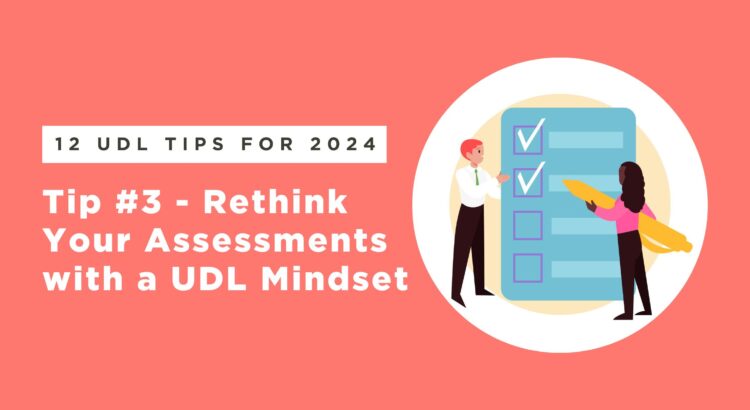Notes from the field: “I was a Modern Languages teacher for years and always had my students do oral presentations in front of the class. As a language teacher you have to assess their speaking ability, right? One time, I had a student who usually did well on written quizzes and listening tasks, but when she got up to do her oral presentation, she fell apart. She immediately became flushed and uncomfortable and began to stutter, which she had never done previously speaking in class. She literally couldn’t put two sentences together because she kept losing her place and had to stop and restart. That’s when it finally dawned on me. Why didn’t I give my students the option to video their presentation in advance? Her poor performance was driven by her anxiety about speaking in front of an audience, not because she didn’t know how to use the grammar or memorize the vocabulary.”

UDL Approaches to Assessment Increase Equity
Just as Equity, Diversity, and Inclusion work teaches us that offering equal treatment or supports for students in the name of fairness does not guarantee equitable outcomes, UDL promotes multiple means of engagement, representation, and action/expression to reduce systemic barriers for students that may not be immediately obvious to a busy teacher focused on keeping their grading standardized and manageable. Learner variability, which we discussed in last month’s UDL Tip, is a guarantee that a particular type of assessment will not work equally well for all students at all times. In the previous notes from the field example, the assessment was actually inequitable because it did not accurately represent that student’s ability to achieve the learning outcome. Now imagine the student’s stress levels if that oral presentation was worth 15% (roughly a sixth) or even 20% (one fifth) of the entire course grade.
Allowing students a choice in their assessment, particularly if technology can help create easy-to-use, accessible alternatives, is a great UDL way to offer multiple means for students to express their learning. That choice can also look different in different assessments. Maybe it is an asynchronous video or audio recording. Maybe it’s allowing students to choose a non-speaking role in paired or group assessment. Maybe it’s offering a number of creative ways in which a student can express their learning, i.e. a poster, an audio journal, a live or filmed demonstration, a how-to manual with visual instructions and text.
Instructors who worry that offering students a choice in their assessment means more work may be pleasantly surprised. Often the addition of a technology-enhanced option can actually speed up the assessment process because students have to prepare in advance and can control the timing of their completed assessment. Also, UDL is about designing up front to reduce barriers to learning. Using rubrics to clarify expectations, sharing examples of successful and unsuccessful work from previous students (anonymized and with permission!), building in frequent formative assessments to give students feedback at stages along the way, and explicitly involving students to reflect on the learning process all reduce the need for lengthy assessment comments. Most importantly, these UDL techniques promote student success and authentic student engagement with the learning material.

In a sea of forgettable weekly quizzes, wouldn’t it be nice for students to also reflect on those assessments that gave them a choice to work to their strengths, be creative, and really shine as they express their learning?

